This Is One Slice Of An Incredible High Resolution, Enhanced Color Image Of Pluto, Recently Released
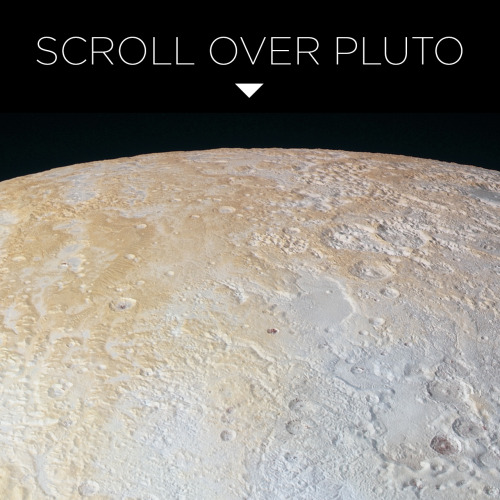
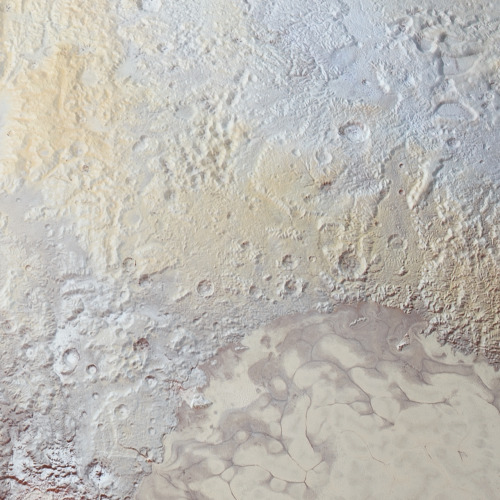
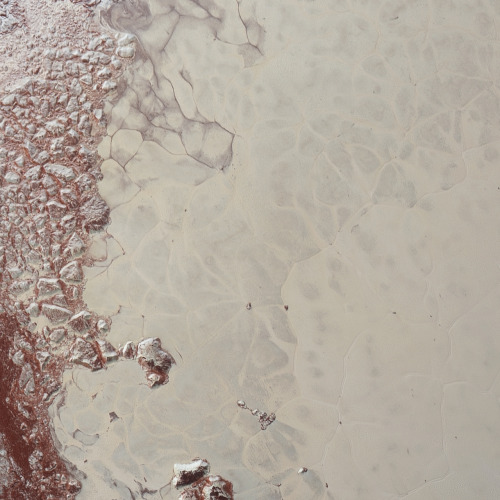
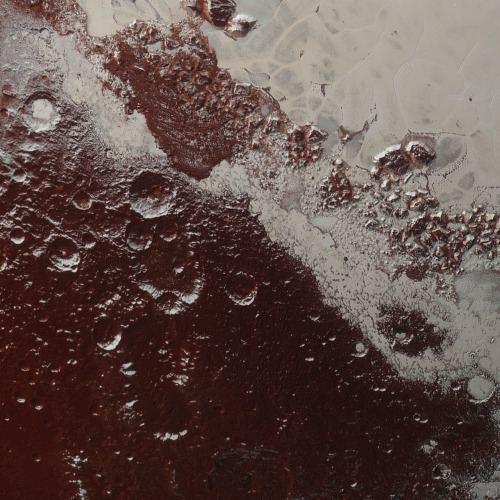
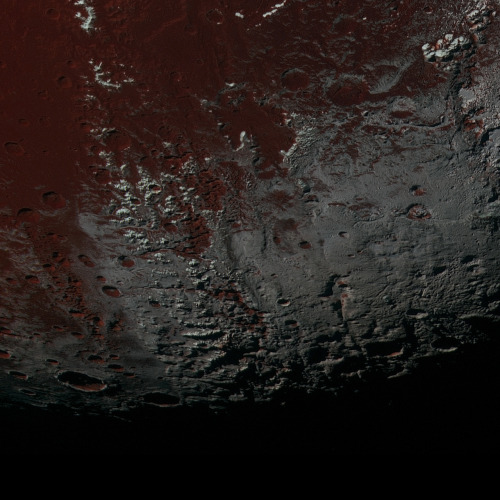
This is one slice of an incredible high resolution, enhanced color image of Pluto, recently released by NASA. You can see the full, larger version here.
Credit: NASA/JHUAPL/SwRI
More Posts from Spacecheesus-blog and Others
Largest Collection of Planets EVER Discovered!
Guess what!? Our Kepler mission has verified 1,284 new planets, which is the single largest finding of planets to date. This gives us hope that somewhere out there, around a star much like ours, we can possibly one day discover another Earth-like planet.

But what exactly does that mean? These planets were previously seen by our spacecraft, but have now been verified. Kepler’s candidates require verification to determine if they are actual planets, and not another object, such as a small star, mimicking a planet. This announcement more than doubles the number of verified planets from Kepler.

Since the discovery of the first planets outside our solar system more than two decades ago, researchers have resorted to a laborious, one-by-one process of verifying suspected planets. These follow-up observations are often time and resource intensive. This latest announcement, however, is based on a statistical analysis method that can be applied to many planet candidates simultaneously.
They employed a technique to assign each Kepler candidate a planet-hood probability percentage – the first such automated computation on this scale, as previous statistical techniques focused only on sub-groups within the greater list of planet candidates identified by Kepler.
What that means in English: Planet candidates can be thought of like bread crumbs. If you drop a few large crumbs on the floor, you can pick them up one by one. But, if you spill a whole bag of tiny crumbs, you’re going to need a broom. This statistical analysis is our broom.

The Basics: Our Kepler space telescope measures the brightness of stars. The data will look like an EKG showing the heart beat. Whenever a planet passes in front of its parent star a viewed from the spacecraft, a tiny pulse or beat is produced. From the repeated beats, we can detect and verify the existence of Earth-size planets and learn about their orbits and sizes. This planet-hunting technique is also known as the Transit Method.

The number of planets by size for all known exoplanets, planets that orbit a sun-like star, can be seen in the above graph. The blue bars represent all previously verified exoplanets by size, while the orange bars represent Kepler’s 1,284 newly validated planets announced on May 10.

While our original Kepler mission has concluded, we have more than 4 years of science collected that produced a remarkable data set that will be used by scientists for decades. The spacecraft itself has been re-purposed for a new mission, called K2 – an extended version of the original Kepler mission to new parts of the sky and new fields of study.

The above visual shows all the missions we’re currently using, and plan to use, in order to continue searching for signs of life beyond Earth.
Following Kepler, we will be launching future missions to continue planet-hunting , such as the Transiting Exoplanet Survey Satellite (TESS), and the James Webb Space Telescope. We hope to continue searching for other worlds out there and maybe even signs of life-as-we-know-it beyond Earth.
Make sure to follow us on Tumblr for your regular dose of space: http://nasa.tumblr.com
"Hold up, Houston, let me take a selfie."

Buzz Aldrins self-portrait during Gemini 12 with the Earth reflecting off his visor, 12 November 1966
js
I need some space cakes in my life.








Galaxy based food
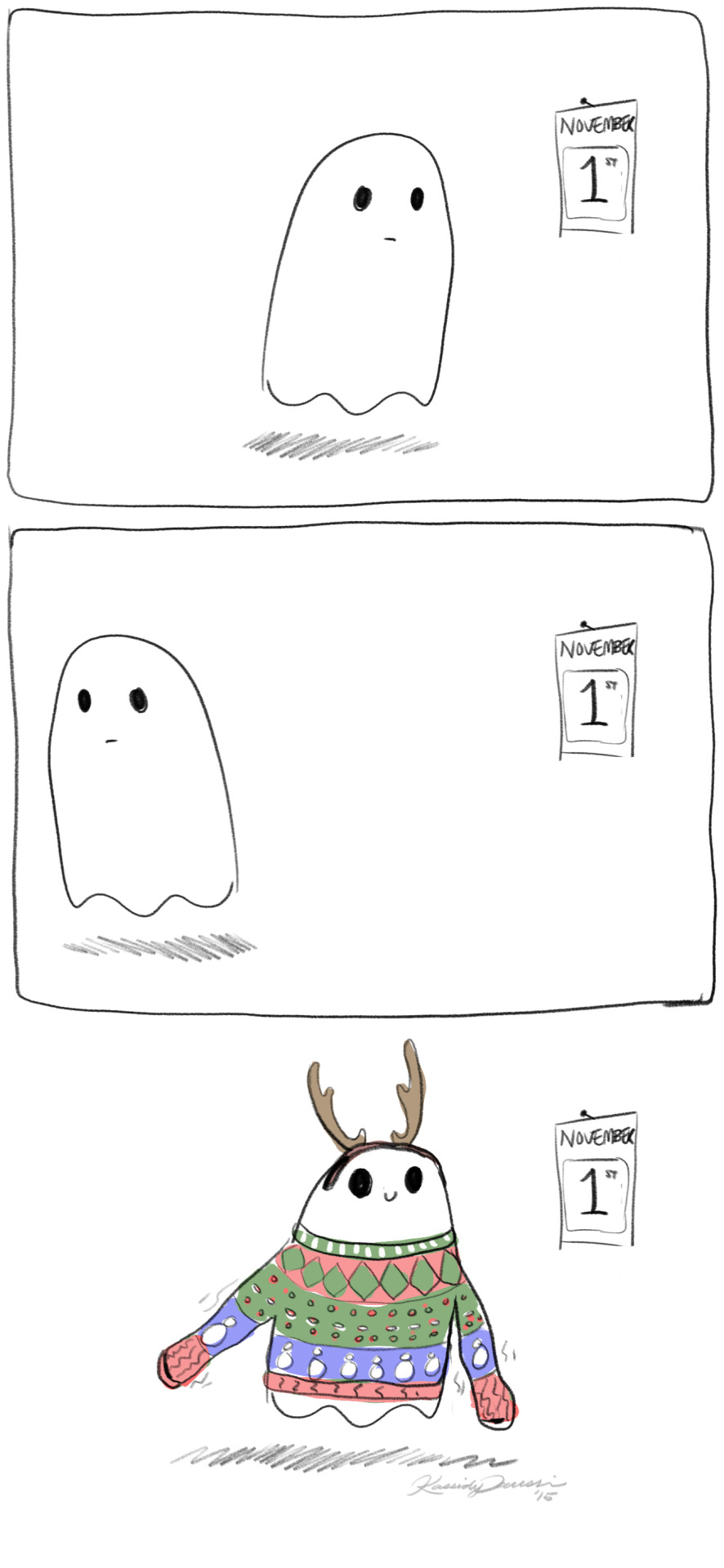
Halloween is over… Let the spooptivities begin
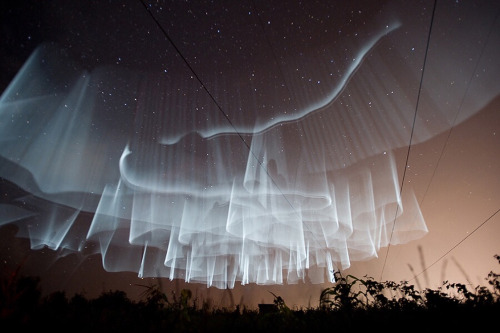
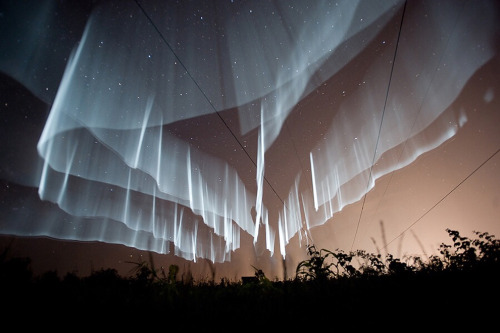
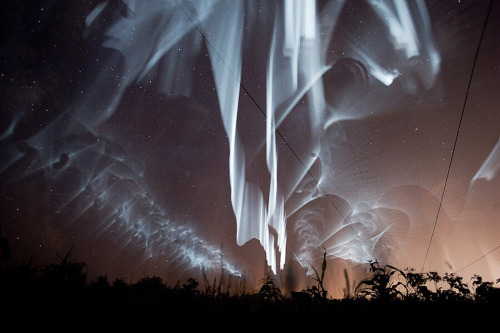
Rare White Curtain Auroras Seen Over Finland
Behold stargazers, this is not an art installation. These are actually stunning white Northern Lights in Finland. The stunning Aurora Borealis resemble a white curtain, which seems to be made by photoshop; but we promise you they are organic beauties made by the hands of Mother Nature.
We’re With You When You Fly

Did you know that “We’re With You When You Fly”? Thanks to our advancements in aeronautics, today’s aviation industry is better equipped than ever to safely and efficiently transport millions of passengers and billions of dollars worth of freight to their destinations. In fact, every U.S. Aircraft flying today and every U.S. air traffic control tower uses NASA-developed technology in some way. Here are some of our objectives in aeronautics:
Making Flight Greener

From reducing fuel emissions to making more efficient flight routes, we’re working to make flight greener. We are dedicated to improving the design of airplanes so they are more Earth friendly by using less fuel, generating less pollution and reducing noise levels far below where they are today.
Getting you safely home faster

We work with the Federal Aviation Administration to provide air traffic controllers with new tools for safely managing the expected growth in air traffic across the nation. For example, testing continues on a tool that controllers and pilots can use to find a more efficient way around bad weather, saving thousands of pounds of fuel and an average of 27 minutes flying time per tested flight. These and other NASA-developed tools help get you home faster and support a safe, efficient airspace.
Seeing Aviation’s Future

Here at NASA, we’re committed to transforming aviation through cutting edge research and development. From potential airplanes that could be the first to fly on Mars, to testing a concept of a battery-powered plane, we’re always thinking of what the future of aviation will look like.
Make sure to follow us on Tumblr for your regular dose of space: http://nasa.tumblr.com
-
 navydinosaur reblogged this · 4 months ago
navydinosaur reblogged this · 4 months ago -
 refor-mar reblogged this · 4 months ago
refor-mar reblogged this · 4 months ago -
 solsnascentess reblogged this · 4 months ago
solsnascentess reblogged this · 4 months ago -
 descrevos reblogged this · 4 months ago
descrevos reblogged this · 4 months ago -
 buffywintersthevampireslayer liked this · 5 months ago
buffywintersthevampireslayer liked this · 5 months ago -
 nutcasewithaknife reblogged this · 5 months ago
nutcasewithaknife reblogged this · 5 months ago -
 nutcasewithaknife liked this · 5 months ago
nutcasewithaknife liked this · 5 months ago -
 sleepydreameroncloud9 reblogged this · 5 months ago
sleepydreameroncloud9 reblogged this · 5 months ago -
 persef00ne liked this · 8 months ago
persef00ne liked this · 8 months ago -
 girlbossvicvega liked this · 9 months ago
girlbossvicvega liked this · 9 months ago -
 texashippiecowboy reblogged this · 9 months ago
texashippiecowboy reblogged this · 9 months ago -
 satinns reblogged this · 9 months ago
satinns reblogged this · 9 months ago -
 thatonesimp-e liked this · 10 months ago
thatonesimp-e liked this · 10 months ago -
 enjoyer-of-moss reblogged this · 10 months ago
enjoyer-of-moss reblogged this · 10 months ago -
 yourlocalloserdefunct liked this · 10 months ago
yourlocalloserdefunct liked this · 10 months ago -
 neonparticle liked this · 10 months ago
neonparticle liked this · 10 months ago -
 loobydoopoppycock liked this · 10 months ago
loobydoopoppycock liked this · 10 months ago -
 isaiah-the-starborn reblogged this · 10 months ago
isaiah-the-starborn reblogged this · 10 months ago -
 faim308 liked this · 1 year ago
faim308 liked this · 1 year ago -
 ushomeguard liked this · 1 year ago
ushomeguard liked this · 1 year ago -
 danneelgrauls liked this · 1 year ago
danneelgrauls liked this · 1 year ago -
 gaboobers liked this · 1 year ago
gaboobers liked this · 1 year ago -
 kuku-doodles liked this · 1 year ago
kuku-doodles liked this · 1 year ago -
 arcadepunk liked this · 1 year ago
arcadepunk liked this · 1 year ago -
 noitscarina reblogged this · 1 year ago
noitscarina reblogged this · 1 year ago -
 spaceblr reblogged this · 1 year ago
spaceblr reblogged this · 1 year ago -
 qpalzmskwii reblogged this · 1 year ago
qpalzmskwii reblogged this · 1 year ago -
 pineapplevhead reblogged this · 1 year ago
pineapplevhead reblogged this · 1 year ago -
 christmas-connections liked this · 1 year ago
christmas-connections liked this · 1 year ago -
 allisonragents liked this · 1 year ago
allisonragents liked this · 1 year ago -
 idthamtiosiogroun liked this · 1 year ago
idthamtiosiogroun liked this · 1 year ago -
 curiouskeebler reblogged this · 1 year ago
curiouskeebler reblogged this · 1 year ago -
 drewsicuhore liked this · 1 year ago
drewsicuhore liked this · 1 year ago -
 spinkertoot liked this · 1 year ago
spinkertoot liked this · 1 year ago -
 supercharly liked this · 1 year ago
supercharly liked this · 1 year ago -
 danieloquent liked this · 1 year ago
danieloquent liked this · 1 year ago -
 thenakedbrain liked this · 1 year ago
thenakedbrain liked this · 1 year ago -
 thecampingeel reblogged this · 1 year ago
thecampingeel reblogged this · 1 year ago
Hello, folks! I mainly like to post things of the space, cartoons, and caffiene variety. Enjoy your stay! :)
37 posts







